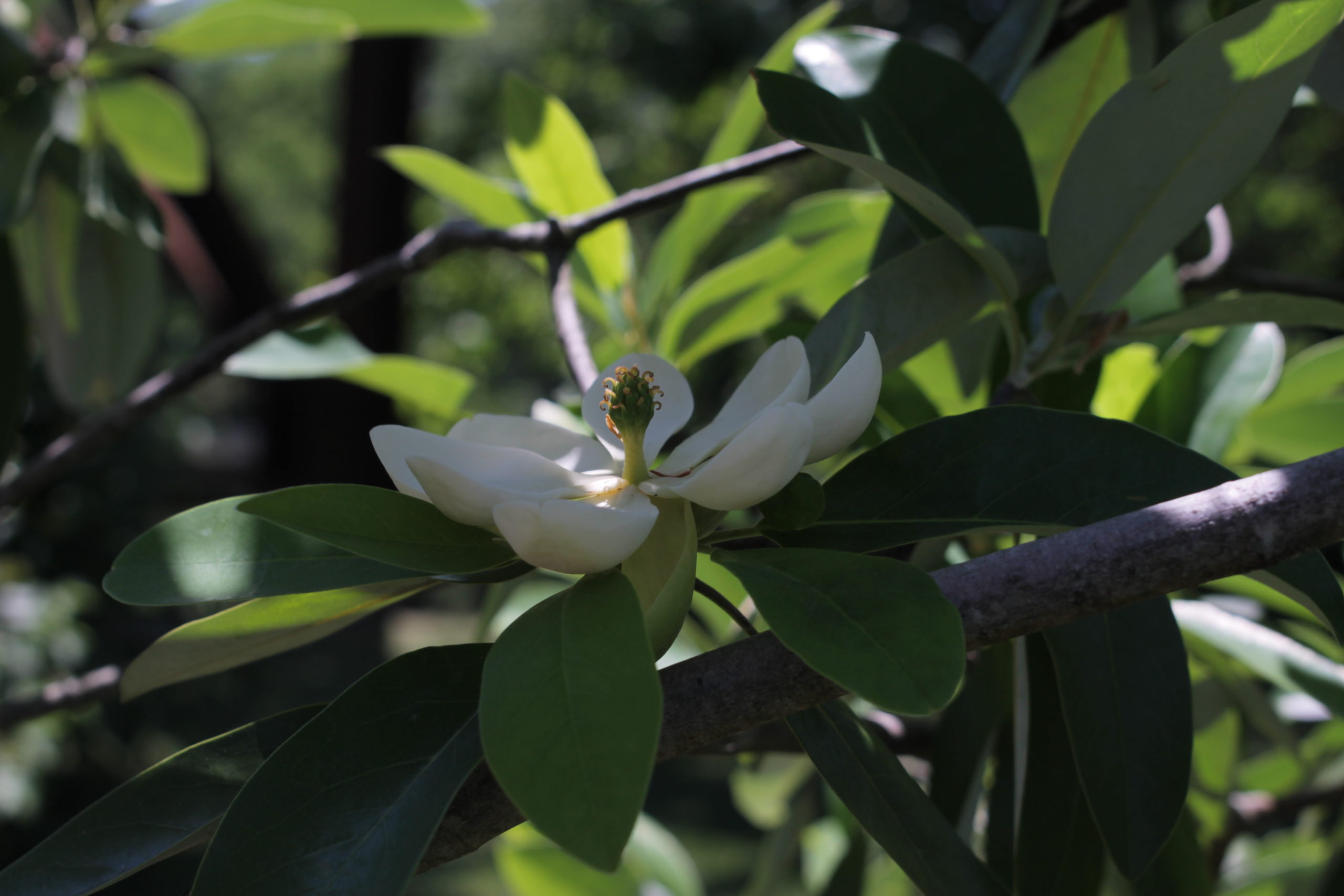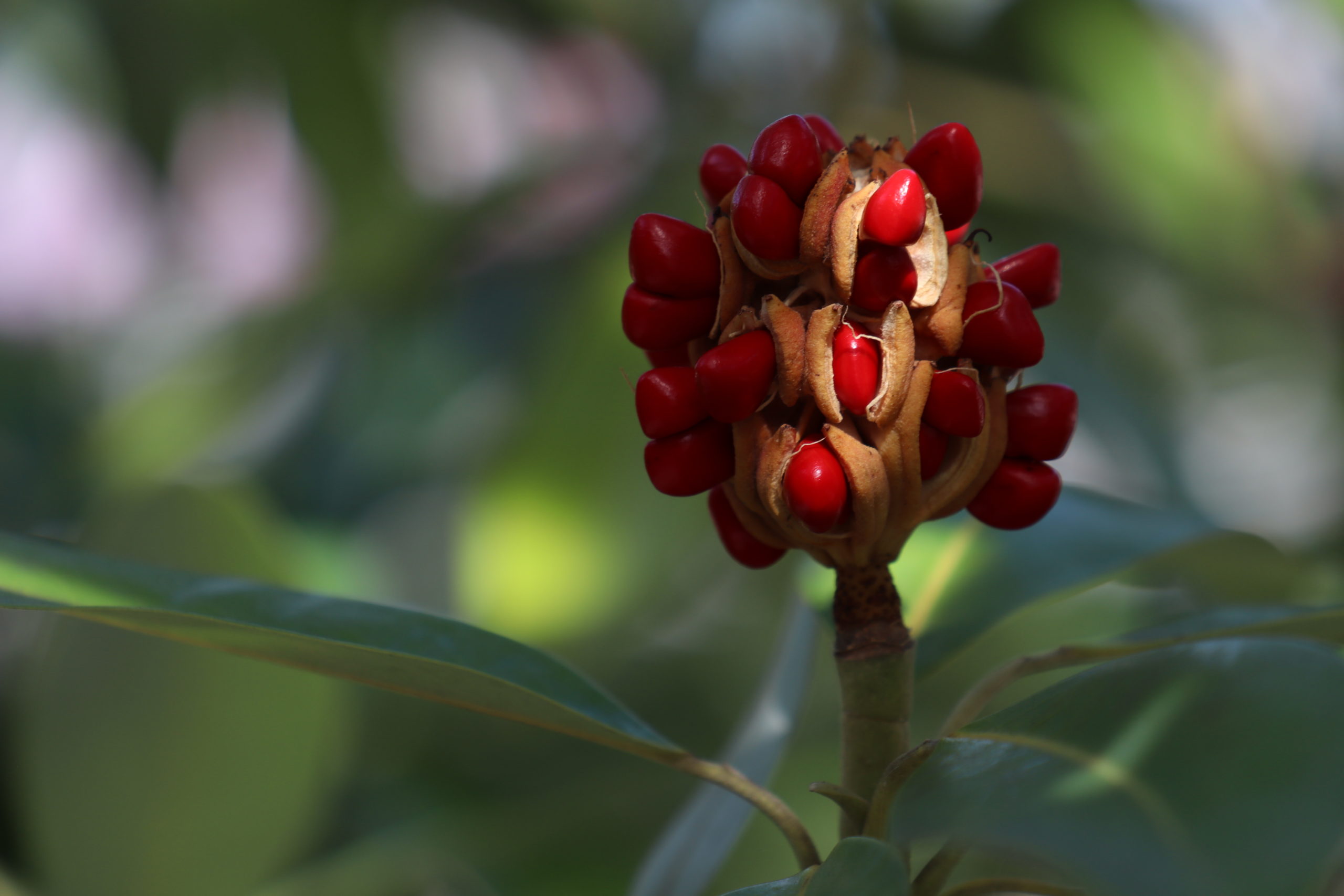Author: Lisa Trapp
Appearing as though it should be more at home in the mountains, Sweetbay Magnolia (Magnolia virginiana), also sometimes referred to as “Swamp Magnolia”, is actually historically native to the Capital Region, and can be found extending all the way East toward the coast. Often overshadowed by the larger and more showy introduced species of Southern Magnolia (Magnolia grandiflora) the Sweetbay is definitely one you don’t want to miss.
These magnolias do well in a range of sun to shade and can reach 10 – 20 ft high, but prefer moist, swampy, and wet soil. When growing in warmer areas with milder winters the Sweetbay magnolia can present as an evergreen tree, but the further North it is found the more likely it is to be a semi-evergreen, or even fully deciduous.

Ultimately, the Sweetbay Magnolia has something exciting to see (and smell) all year long. With a name like Sweetbay it should be no surprise that the leaves and twigs smell aromatic and spicy (like bay leaves!) But these lovely trees also present showy and softly fragrant white blooms that appear in May through June. Blooms attract a range of pollinators, including Tiger Swallowtails (Papilio glaucus) and Spicebush swallowtail (Papilio troilus) , but it is most often visited by moths and beetles. Though regarded as a host plant for Sweetbay Silk Moths (Callosamia securifera) a giant mouthless moth in the Saturniidae family (which includes such familiar species as Luna and Polyphemus), it is rare for the night time giants to venture as far north as Virginia.

When blooms are spent they give way to conical shaped fruits with bright red berries which are attractive to small mammals and a range of songbirds like Towhee (Pipilo spp.), Vireos (Vireo spp.), Northern Flicker (Colaptes auratus) and Blue Jays (Cyanocitta cristata). And its larger branching top provides excellent habitat and cover for critters seeking shelter in a variety of weather, from extreme rain and wind to mild winters.

These beauties can be spotted dotting along the Low Line between the River Birch (Betula nigra) and Hop Hornbeam trees (Ostrya Virginiana). Whether you choose to walk, run, or bike past them, make sure to give them more than just a second glance, we promise you won’t regret it!
Resources:
http://www.vaplantatlas.org/index.php?do=plant&plant=2979&search=Search
https://plants.ces.ncsu.edu/plants/magnolia-virginiana/
https://www.arborday.org/trees/treeguide/TreeDetail.cfm?ItemID=865
https://www.wildflower.org/plants/result.php?id_plant=mavi2
https://bernheim.org/learn/trees-plants/bernheim-select-urban-trees/sweetbay-magnolia/

